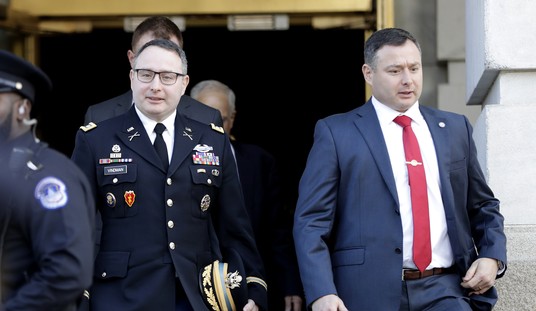The domestic automakers are in ‘Intensive Care’. The bailout medicine being injected as an IV drop by the outgoing Bush Administration is a $17 billion dollar placebo. As prescribed, it will neither cure the patients nor help the workers whose union is not cooperating.
While the excessively high labor, benefit and pension costs contracted over the years by the three automakers can be described as a virulent out of control virus, a more apt description is several bad cells that, over the years, mutated, multiplied, grew into bulbous tumors, and metastasized onto the bone of the businesses.
Neither President Bush nor President-elect Obama are willing to face all the facts.
Here’s a briefing:
WORKERS
The three domestic automakers employ 150,000 factory workers in the U.S. That’s about 30 to 36 thousand more than really needed. Current wage rates and benefits, including pension costs for all current and future retirees, add $1600 to the manufacturing cost of each vehicle. Those are facts, and core problems.
While the UAW and the companies often spin other data, here are more facts for you. The average hourly rate for Big Three factory workers is $28. Add $10 for benefits, that’s $38 per hour. But, that is for current workers only. When current and future retirement and benefit costs for all personnel are necessarily included, the hourly labor rate jumps dramatically. The specific rates, as reported by Forbes are – “Ford: $70.51, GM: $73.26, and Chrysler: $75.86. Compare that with the total labor costs of Toyota, Honda, and Nissan (in U.S.): $48.00”. You can see the core cost problem affecting the viability of the Big Three domestic automakers.
Recommended

The Bush plan is right in calling for UAW wages to be brought in line with competitive pay of other workers at US auto plants, along with more flexible work rules; but, wrong to delay needed adjustments to December 31, 2009.
In addition, the UAW so-called ‘Job Bank’ must be eliminated immediately. The Job Bank pays idle workers, in the aggregate, 95% of their hourly rate for doing nothing. It is yet another example of how weak management permitted ice to buildup on the wings of their businesses. Left in place, such inappropriate costs freeze and crash the enterprise. It is not acceptable to give either union or company officials a pass on this or any other instance of dastardly deal-making.
Despite these realities, UAW president Ron Gettelfinger continues to stall progress, saying he wants incoming President Barack Obama to remove what he calls “these unfair conditions, singling out workers”. Apparently, Gettelfinger is betting he can get Obama to support the continuing UAW intransigence - which remains problem #1 for the automakers - as payback for union support in the election. Then, after the inauguration, Gettelfinger can work the democrat majority in Congress to take more money from cash-strapped taxpayers and willfully pour it down the sink hole.
If Obama folds to this union pressure, so will the domestic auto industry. Instead, without further delay, President-elect Obama should bluntly, and publicly, tell Gettelfinger to accept the realities of the Bush bailout provisions already on the table, to publicly accept them by New Years Eve; or, alternatively, step aside and start the New Year as a former UAW president.
SUPPLIERS
Suppliers have experienced a downturn in line with the drop in auto sales; and, now are on the ropes as a result of the decision by manufacturers to suspend production and close plants, at least temporarily. Until new vehicle sales rebound, relief is not in sight. Some have called for government aid to suppliers and government covering automaker IOUs. This is nonsense. Government aid or covering automaker IOUs is out of the question as either undermines the plan offered to GM and Chrysler and would be yet another hit on taxpayers.
CREDITORS
Creditors are another financial key. They are being asked to cut debt owed to them by two-thirds in exchange for stock or other equity. If they do not agree to do so in sufficient numbers, the bailout plan will sink; and, recalcitrant creditors will end up in bankruptcy court where debt renegotiation is typically done.
SHAREHOLDERS
Shareholder equity has plummeted. And, planned government warrants will devalue current stock further. That is understandable.
The bailout plan could result in the issuance of new shares for existing creditors, union pension funds, and workers taking half of their individual retirement benefits in stock. That makes sense. Workers could take a stake in a business that has provided them extraordinary wages and benefits over the years. Workers have an opportunity to demonstrate faith and commitment in their own efforts to improve quality and productivity in the workplace.
In addition, specially coded stock should be introduced to attract additional private investment. Such new private investment should have priority placement should future bankruptcy occur.
Further, dividends should be reinstituted, rather than suspended. Any dividends paid on government warrants or federal stock certificates should be treated as loan repayments.
DEALERS
Dealership closings are increasing. At locations where doors remain unlocked, public perception of automaker viability has resulted in a significant drop in showroom traffic. Yet, more impactful, is the fact that dealers are reeling due to the reduced availability of consumer credit, and higher qualification standards for approval.
CUSTOMERS
New and returning customers are the ultimate way to revive the domestic auto industry. Automakers reportedly are working on “promotions to attract people into dealer showrooms”. But, if history repeats itself, most deals are ‘sleeves out of the vest’. What consumers want with every product they purchase is real value. When they perceive quality and style as equal, or near equal, among competitors, almost all consumers will decide on price in order to increase value received. The challenge for domestic automakers is that each must significantly increase quality and style over the strategic timeline in order to attract many more prospective buyers. In the tactical interim, each brand must significantly increase value by adjusting delivered price and customer carrying costs in order to increase vehicle sales and lease activity.
THE BOTTOM LINE
Company and union leaders are being tested. Key questions include: ‘can management and labor collaborate effectively to drive down costs? And, ‘can dealer sales forces accurately convey real product value to prospective customers?’
Those that can – and do - deserve to close more business. Those that cannot – or will not – deserve their businesses to close.

























Join the conversation as a VIP Member